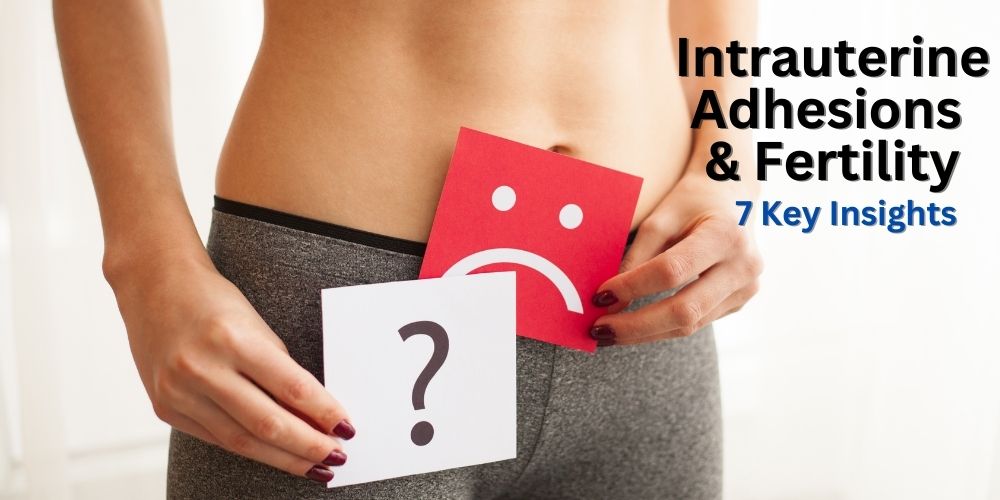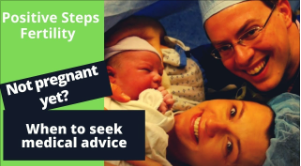Intrauterine adhesions are a little-known condition that can affect your reproductive health if left untreated. As is the case with many on their fertility journey, the sea of medical terms can be overwhelming and leave you feeling adrift.
In this post, we’re going to give some clarity on what intrauterine adhesions are, how they are treated, and how they can affect women’s fertility.
1. What is IUA?
Intrauterine adhesions (IUAs), also known as Asherman’s syndrome, is a condition where bands of fibrous tissue form in the endometrial cavity, often in response to a uterine procedure. The endometrial cavity is the space inside the uterus where a baby grows during pregnancy. A uterine procedure is any surgery or intervention that involves the uterus, such as dilation and curettage (D&C), cesarean section, or hysteroscopy.
2. Symptoms of intrauterine adhesions
IUAs can cause various problems, depending on how severe they are and where they are located. Some of the possible symptoms of IUAs are:
- Infertility: IUAs can prevent the implantation of an embryo or interfere with the blood supply to the placenta.
- Recurrent pregnancy loss: IUAs can increase the risk of miscarriage or preterm delivery.
- Menstrual abnormalities: IUAs can reduce or stop the menstrual flow, causing amenorrhea (absence of periods) or hypomenorrhea (light periods).
- Pain: IUAs can cause pelvic pain or cramps, especially during menstruation or ovulation.
3. The Impact of Pelvic Adhesions on Fertility
Every woman is different, and to truly know the impact of IUA on your fertility, the best choice is to consult with a fertility specialist who can evaluate your condition and recommend the best treatment option for you.
In general, women with mild to moderate IUA have a good chance of achieving pregnancy after treatment, especially if they have a normal endometrial thickness and no other underlying conditions. Women with severe IUA may have a lower chance of pregnancy and a higher risk of complications, such as ectopic pregnancy, preterm labor, placenta previa, or intrauterine growth restriction.
Some women with severe IUA may not be able to conceive naturally and may need to use assisted reproductive technologies (ART), such as in vitro fertilization (IVF) or surrogacy.
4. How IUA is diagnosed
IUA can be suspected based on your medical history and the previously mentioned symptoms, such as absent or scanty periods, pelvic pain, infertility, or recurrent pregnancy loss. To confirm the diagnosis, your doctor may perform one or more of the following tests:
- Parryscope approach: This is a newer breakthrough in fertility testing that uses an ultrasound to understand the broader pelvis and outer uterus and a special thin and flexible hysteroscope for the inner uterus, we get valuable insight into whether the uterus can accept and nurture the embryo
- Hysterosalpingography (HSG): This is an X-ray test that involves injecting a dye into the uterus and fallopian tubes and taking images to see if there are any blockages or abnormalities.
- Hysteroscopy: This is a procedure that involves inserting a thin, flexible camera into the uterus through the cervix and visually inspecting the inside of the uterus.
- Sonohysterography (SHG): This is an ultrasound test that involves injecting saline into the uterus and using sound waves to create images of the uterine cavity.
- Magnetic resonance imaging (MRI): This is a scan that uses magnetic fields and radio waves to create detailed images of the uterus and other pelvic organs.
5. How IUA is treated
The treatment and management of intrauterine adhesions depends on the extent and location of the adhesions, as well as the patient’s goals and preferences. The main treatment of intrauterine adhesions is hysteroscopic resection, which is a surgery that uses a thin instrument to cut and remove the adhesions. After the surgery, some measures may be taken to prevent the recurrence of adhesions, such as:
- Placing a device (such as a balloon or stent) inside the uterus to keep the walls apart
- Taking hormonal medications (such as estrogen or progestin) to stimulate the growth of the endometrium
- Performing regular hysteroscopies to monitor the healing process
The prognosis of intrauterine adhesions depends on several factors, such as:
- The cause and duration of the adhesions
- The extent and location of the adhesions
- The number and outcome of previous surgeries
- The age and reproductive history of the patient
Some women may have a good chance of restoring their menstrual function and fertility after treatment, while others may have permanent damage to their endometrium or fallopian tubes. Therefore, it is essential to consult with a gynecologist who specializes in IUAs and discuss the available options and expectations.
6. How IVF works with an IUA diagnosis
If you have been diagnosed with intrauterine adhesions, you may be wondering if you can still use in vitro fertilization (IVF) to achieve pregnancy. The good news is that IVF is still possible for many women with IUA, depending on the severity and location of the adhesions.
IVF is a fertility treatment that involves stimulating the ovaries to produce multiple eggs, retrieving them from the ovaries, fertilizing them in a laboratory with sperm from a partner or donor, and transferring one or more embryos into the uterus. IVF bypasses the fallopian tubes, which are often damaged or blocked in women with IUA. IVF also allows for preimplantation genetic testing (PGT) of the embryos, which can improve the chances of a healthy pregnancy and reduce the risk of miscarriage.
However, IVF is not a guarantee of success for women with IUA. The scar tissue can still affect the lining of the uterus, making it difficult for the embryo to implant or grow. Therefore, before starting IVF, it is important to have a thorough evaluation of the uterine cavity by a fertility specialist. These tests can help determine the extent and location of the adhesions, and whether they can be removed surgically.
Surgical removal of intrauterine adhesions, also known as hysteroscopic adhesiolysis, is a minimally invasive procedure that uses a thin instrument called a hysteroscope to cut and remove the scar tissue from the uterus. This can improve the quality and thickness of the endometrium (the uterine lining), and increase the chances of implantation and pregnancy after IVF. However, surgery is not always successful or feasible, especially for severe cases of IUA. In some cases, surgery may even worsen the condition by causing more scarring or damage to the uterus.
Women with IUA who are considering IVF should discuss their options and expectations with their fertility specialist.
7. How hormonal therapies factor into treatment
A specialist might recommend using hormonal therapies or other drugs as postoperative adjuvant therapy to help with intrauterine adhesions.
Hormonal therapies aim to stimulate the growth and regeneration of the endometrium by providing estrogen, progesterone, or other hormones that are typically produced by the ovaries. These hormones can be taken orally, injected, or applied as patches or gels.
Other drugs that may help with IUA treatment are those that improve blood flow to the uterus, such as low-dose aspirin, vitamin E, and sildenafil citrate. These drugs can enhance the delivery of oxygen and nutrients to the endometrial tissue and promote healing.
Another drug that has been shown to improve endometrial thickness and receptivity is the granulocyte colony-stimulating factor (G-CSF), which is a growth factor that stimulates the production of white blood cells. G-CSF can be administered by intrauterine perfusion, which means injecting it directly into the uterine cavity.
In recent years, some new therapeutic strategies have emerged for repairing endometrial tissue in IUA patients, such as cell or therapeutic molecular delivery therapy and bioactive scaffold-based tissue engineering. These methods use biomaterials, stem cells, or growth factors to create a functional endometrium that can support implantation and pregnancy. However, these methods are still in the experimental stage and need more clinical trials to prove their safety and efficacy.
With all the possibilities for treating intrauterine adhesions, you must consult an OBGYN or fertility specialist if you are trying to conceive with this condition. With all of the uncertainty surrounding not only IUA but a myriad of other factors in your reproductive health, having a professional by your side to help guide you through the difficulties is invaluable.
If you are struggling with IUA and/or fertility, contact us so we can help. Don’t suffer in silence. Find answers. Find peace.




